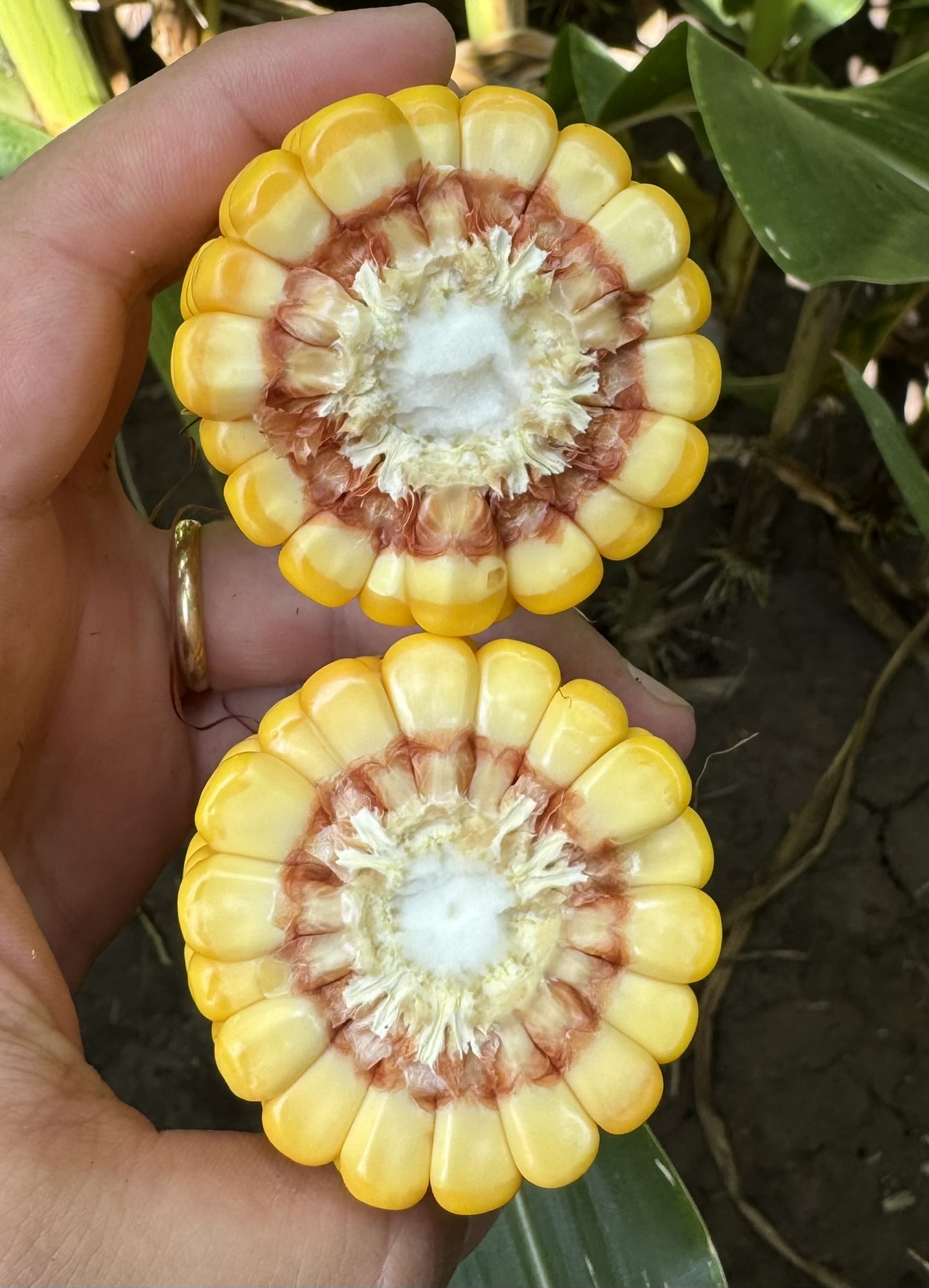DON'T LET CROWN ROT HAUNT YOUR CORN FIELDS THIS FALL
Key Points:
- Wet conditions early in the growing season raise the risk of crown rot in corn fields.
- Poorly drained fields are especially vulnerable.
- Scout fields now to determine if fields need to be prioritized for harvest.
Ghost plants have been popping up in fields since August, a spooky sign crown rot could haunt corn fields this fall. These “ghosts” refer to a solitary corn stalk that dies off quickly, taking on a brown and pinkish color that makes it stand out from the healthy, green corn plants around it. They’re an ominous sign that crown or stalk rot may be causing problems in corn fields.
AgriGold Agronomist Brett Leahr is concerned crown rot in corn will be widespread in the Corn Belt this fall, especially in his territory that stretches from northern Missouri to central Illinois, encompassing multiple soil types, environments, rain patterns and planting dates.
Wet spring left corn prone to infection
Infection by the fungus Fusarium occurs early in the season, though the corn crown rot it causes doesn’t develop until later. Infections tend to occur in years when continuous rain saturates fields — conditions many Midwest farmers battled this spring. Poorly drained areas of fields are especially vulnerable.
Another contributor is soil compaction. That, too, has been an issue this season. “In recent years, we haven’t had harsh winters with freeze and thaw cycles that break up the soil,” Leahr says. Consequently, layers of compaction have been building.
Deficiencies and disease compound the problem
While conditions early in the season dictate whether infection occurs, how much the fungus impacts the crop also depends on plant health. All the rain has increased nitrogen leaching. Unfortunately, Fusarium piggybacks on that.
When a crop is deficient in nitrogen, it’s also more vulnerable to other diseases like tar spot, which happens to be another way to compound the threat posed by crown rot. Leahr explains it in this way: “If you come down with the flu (corn crown rot) and you get hit in the nose (tar spot), it handicaps your body’s ability to fight back.” Tar spot will increase the degradation of that crown and the corn stalk.
Adding to concern is the fact tar spot moved in earlier than ever this year. “I saw it at about 1,000 growing degree units (GDUs) this year. For maturities in this area, that’s three leaves away from tassel!” Leahr says. Tar spot will likely reignite in the canopy once fungicide residual wears off.
“If a big corn crop is in the works, corn plants will try to pull everything they can from the stalk, crown, leaves, etc., to build that grain,” Leahr explains. “If those plants are weakened by crown rot, nitrogen deficiency, tar spot or all three, they may start falling and breaking off at the ground. The yield hit could be huge.”
The yield impact goes beyond downed corn. Leahr recently used a digital caliper to compare ear size on a Fusarium-infected plant to an ear from a healthy plant. In that instance, the kernel size was 27% smaller on the infected plant. “When you compare those ears, you can see the milk line on the Fusarium-impacted plant is farther along than on the plant that’s not affected.” Leahr says. “Because so many of today’s hybrids are kernel-flex products that build yield during that grain fill period, that can be significant.”

Ghost hunting in corn fields
Farmers should get out in their corn fields and determine whether crown rot is a threat. “If you see anthracnose top dieback in fields, that’s a good indicator of an early infection of disease with the wet conditions,” Leahr says. “You’ll see the plant dying and yellowing from the top down.”
Plants that are brown and completely dead — ghost plants — signal Fusarium has hit, Leahr explains. The leaves will have a light pink tinge, which he says is likely a “dead giveaway” for Fusarium crown rot.
These symptoms typically start to appear during the second half of August in his area.
Protect corn yields and prepare for harvest
“If you see a lot of ghosted plants in the field, prioritize fields for harvest,” Leahr says, detailing that he’d use a threshold of 5%. And once a field has it, he warns more is likely coming. “Farmers with corn stalk rot may need to prioritize harvest, getting infected fields out before they start to lean and lodge.”
Another priority is soil fertility, especially nitrogen levels. “Tissue sampling can show farmers where their nitrogen is, especially at an early stage,” he says. “Making sure nitrogen is adequate late in the growing season is key to minimizing risk.”
Genetic diversity also helps in a year like this, Leahr says. “Mixing it up with hybrids that flex by girth and length and kernel depth spreads risk when it comes to disease development that affect grain filling.” Improving the drainage of soggy areas can also help.
Otherwise, he encourages farmers to keep an eye out for new products that could help mitigate infection.
If you’d like to learn more about protecting corn fields against damage from crown rot or other diseases, reach out to your local AgriGold agronomist.



